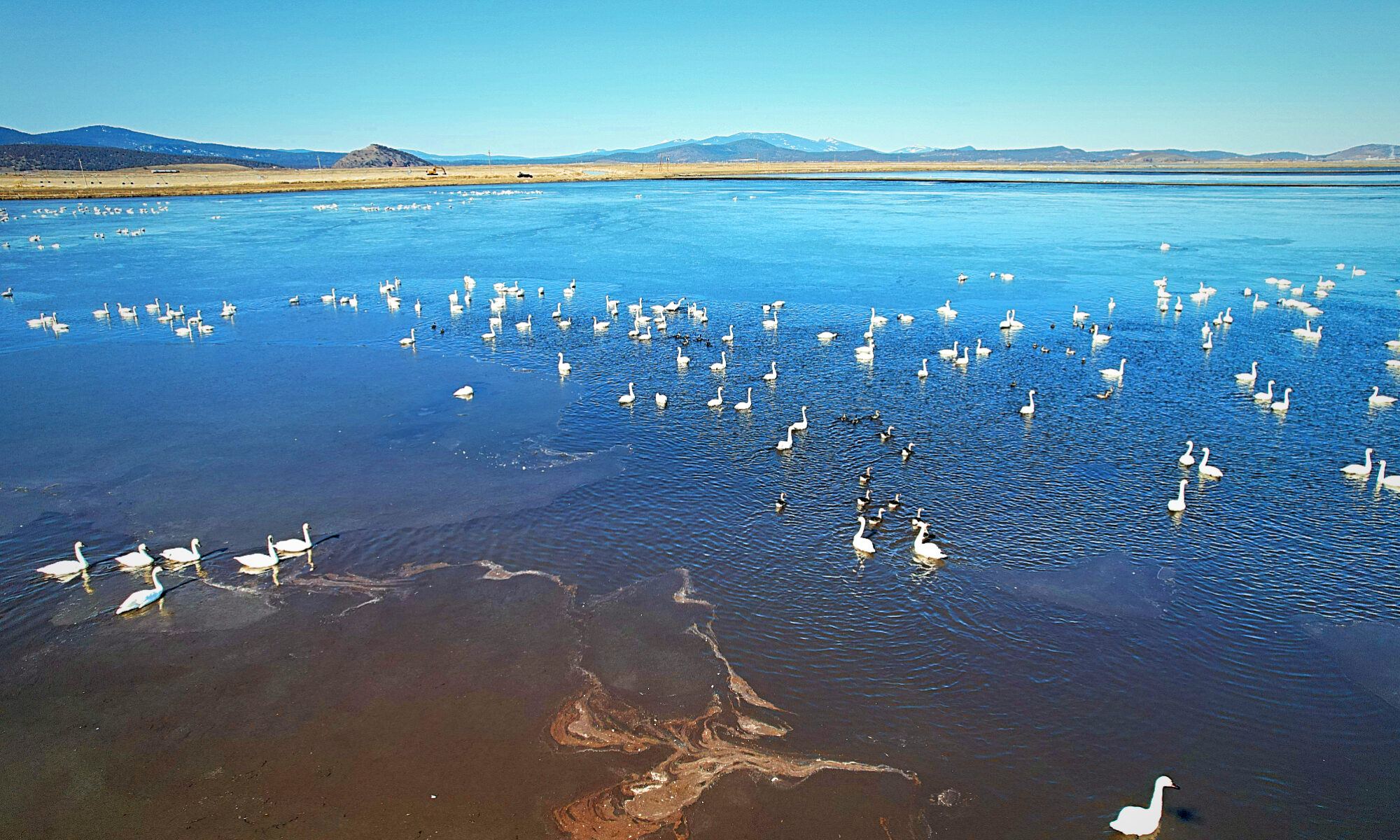
Lower Klamath National Wildlife Refuge looks different this summer than it has for the last several years.
Thanks to the efforts from the Klamath Drainage District (KDD) and Tulelake Irrigation District (TID), reeds and tules are growing throughout the refuge. And with the greenery, wildlife and waterfowl have returned to the wetlands.
But for how long remains in question.
On July 12th, 2024, the Klamath Water Users Association (KWUA) sent a letter to the Commissioner of the US Bureau of Reclamation, Commissioner Camille Calimlim Touton, urging Reclamation to not cut off water to Klamath Basin refuges and farmers late in the season.
Klamath Basin family farmers and ranchers are depending on late season irrigation to finish growing row crops and to get another cutting of hay to sustain their herds through the winter and to sell to other farms throughout the region.
The birds, on the other hand, need water in the refuges to stave off an epidemic of botulism.

As migration along the Pacific Flyway is already underway for some bird species, birdwatchers, hunters, and waterfowl enthusiasts (including Klamath ag) hope to see Klamath Basin refuges start to return to their former glory.

However, as this hot, dry summer continues to drag on, the fear is that the diminishing wetlands will become a breeding ground for disease instead of waterfowl. In 2020, Lower Klamath saw 40,000 birds killed by avian botulism, and while steps have been taken to prevent another massive infection that will impact waterfowl and other Klamath Basin wildlife, at this time there’s still more work to be done.
With the 2020 avian botulism outbreak, Unit 3 of LKNWR was hit especially hard. Refuge managers were left with two options – flush it with cool water to stop the bacteria from multiplying or drain it. The unit was drained, and a field hospital operated by Bird Ally X was set up to treat the birds pulled from the drying, fetid water.
While the much celebrated flow from TID to Unit 3 via D Plant is starting to recede, there’s still a lot of water and waterfowl out on Lower Klamath. In this unit of LKNWR, massive pelicans to the much smaller and more delicate avocet, the wetland is finally looking like the “Gem of the Pacific Flyway” again. In Unit 2, the wetland fed by KDD’s flows, egrets and herons stand guard in the tall reeds while ducks, herons, coots, and grebes swim and feed in the water.
A lot has been gained this year on behalf of the Lower Klamath refuge. However, there’s also that much more at risk if the refuge is allowed to go dry again.

In a recent press release from Ducks Unlimited, they’re reporting a 25% decline in duck breeding numbers in the Pacific Flyway. Add a drying refuge to the equation, this could be devastating to West Coast duck populations.
KDD, its patrons, and its partners have been working to find ways to improve conditions on the Lower Klamath National Wildlife Refuge and to keep those wetlands wet. Many of the conversations during the Lower Klamath Renaissance Tour focused on how a variety of stakeholders can work together on restoration efforts and securing water for the refuge.
However, while the projects that KDD and its partners talked about are going through the process of becoming a reality, Lower Klamath still needs water to ensure there’s not another avian botulism outbreak on the scale of 2020. There are already reports of botulism coming from Tule Lake National Wildlife Refuge.
At this time, KDD’s board is working with the Bureau of Reclamation and the US Fish & Wildlife Service to find a way to get much needed water to Lower Klamath National Wildlife Refuge.
There are also a few things the public can do to help LKNWR.
KDD has a page about how the public can support the Lower Klamath National Wildlife Refuge. Writing to leaders expressing concern for the refuge and waterfowl populations can help them understand the importance of Lower Klamath to the region and the Klamath Basin ecosystem. This understanding can lead to influencing Reclamation to providing much needed water to LKNWR.
We also recommend visiting KDD lands and LKNWR. The district and the refuge have an abundance of waterfowl and wildlife that make this an extraordinary place in the Klamath Basin. Then share those experiences either in-person or on social media to help others understand the importance of Lower Klamath to the Pacific Flyway and the Klamath River ecosystem.
Finally, if you, the public, have ideas on how we can get more water to Lower Klamath, we’d love to hear from you. Drop us a line and let us know your thoughts.
Klamath ag, and especially KDD patrons, have a distinct connection with the Lower Klamath National Wildlife Refuge. With community support, we hope the Bureau of Reclamation will provide the water the refuge needs to make it through fall migration and beyond.
























